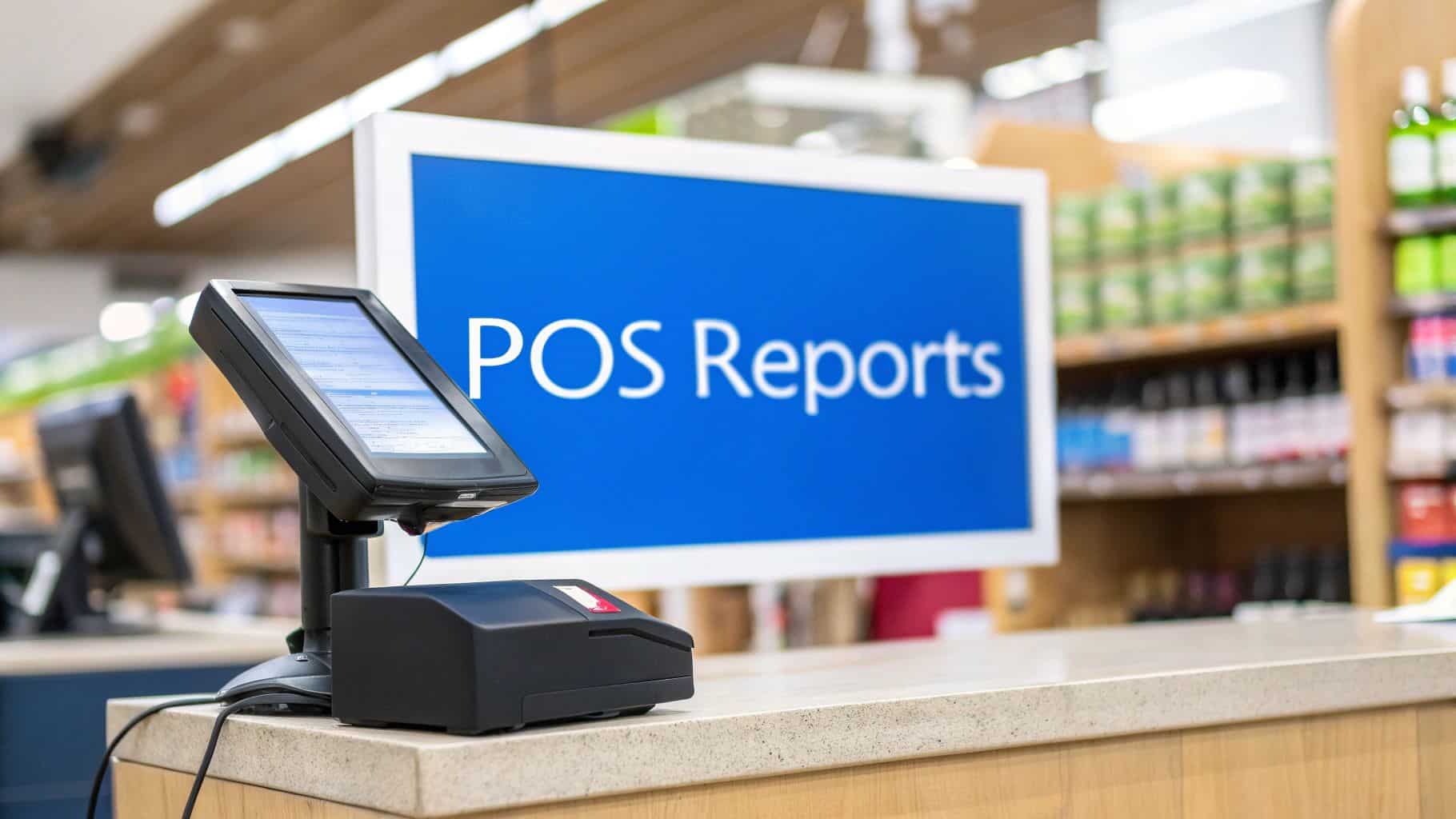Butcher shop income tracking forms the backbone of a profitable meat business. By capturing sales logging accurately and leveraging POS reports, shops can optimize revenue forecasting and cash flow management. In this guide, you will discover practical strategies for daily revenue tracking, expense tracking, and inventory valuation to boost profit margins.
Whether you run a small boutique butcher or a high-volume meat shop, mastering butcher shop income tracking ensures you stay ahead of financial challenges. You will learn how to analyze meat sales data, refine your pricing strategy, and produce clear income statements that drive smart decisions. Let’s dive into each aspect of butcher shop income tracking to build a stronger financial foundation for your business.
Table of Contents
- Tracking Daily Sales and Revenue
- Managing Expenses and Cash Flow
- Optimizing Inventory Valuation
- Leveraging POS Reports for Insights
- Financial Reporting and Income Statements
- About Biyo POS
- FAQ
Tracking Daily Sales and Revenue
Effective butcher shop income tracking begins with precise daily revenue tracking. By logging each transaction, you can uncover sales patterns and adjust your pricing strategy in real time.
Implementing Sales Logging Systems
Choosing the right sales logging system underpins butcher shop income tracking. A modern POS can capture each meat sale, record payment methods, and categorize products automatically. For instance, you might tag premium cuts like Wagyu steaks separately from everyday value packs to monitor demand precisely. This granularity helps you identify which products drive the most revenue and which need promotional support. By setting up barcode scanners and weight-based pricing modules, your staff simply scans and weighs each item, reducing manual entry errors and saving minutes on every transaction.
As a result, you gain clear visibility into your transaction history and can identify best-selling items quickly. Transitioning from manual logs to digital POS reports reduces errors and saves time each day. Meanwhile, staff can focus on serving customers instead of managing paper receipts. In practice, one butcher shop reduced daily reconciliation time by 50% after switching to a cloud-based POS, freeing up two hours each day to prep fresh cuts.
Accurate meat sales analysis relies on consistent sales logging. You can set up daily revenue tracking alerts for unusual dips or spikes, ensuring you address issues promptly. For example, if sales of sausages suddenly drop by 20% compared to the same day last week, an alert can prompt you to check inventory levels, inspect quality, or launch a quick discount. This level of detail makes butcher shop income tracking seamless and reliable.
Analyzing Daily Revenue Trends
Reviewing daily revenue trends sharpens your understanding of peak sales periods. You can compare weekday performance against weekends to refine staffing levels accordingly. For example, a consistent midweek lull might suggest promotional opportunities to boost sales, such as a “Wednesday Steak Special” offering 10% off on ribeyes.
Applying retail analytics tools enhances butcher shop income tracking by highlighting high-margin items and slow-movers. You might notice that specialty sausages sell best on Fridays, guiding you to adjust your stock levels proactively or bundle them with complementary products like artisanal buns. Therefore, trend analysis becomes a roadmap for strategic planning, enabling you to craft targeted promotions that resonate with customer buying habits.
Incorporating revenue forecasting methods helps you anticipate future demand. By analyzing historical data and seasonal patterns, you refine your pricing strategy and inventory valuation. As a result, you maintain optimal stock and maximize profit margins. For instance, knowing that smoked ham sales spike 30% in December allows you to negotiate better supplier rates in advance and secure timely deliveries.
Forecasting Future Sales with Data
Sales forecasting plays a critical role in long-term butcher shop income tracking. Combining daily revenue tracking with historical sales data allows you to predict future performance. For instance, you can forecast meat sales for upcoming holidays like Father’s Day by examining trends from the past five years. This approach ensures you stock the right amount of ribeyes, tri-tips, and specialty roasts without overbuying.
Using revenue forecasting tools, you set realistic sales goals and budget accordingly. You might project a 10% uplift in sales around national barbecue weekends and allocate resources to meet demand, such as hiring part-time help for peak hours. Meanwhile, forecasting models enable you to balance inventory without overstocking, reducing spoilage and markdown losses.
By integrating sales predictions into your POS reports, you streamline cash flow management. This proactive approach ensures you maintain healthy profit margins and reduce waste. As a result, your butcher shop income tracking evolves from reactive to strategic—charting a course for growth rather than merely reporting past performance.

Managing Expenses and Cash Flow
Controlling costs is vital for sustainable butcher shop income tracking. Tracking both revenue and expenses ensures you maintain positive cash flow and healthy profit margins.
Recording Operating Expenses Accurately
Expense tracking forms the counterpart to daily revenue tracking in butcher shop income tracking. You need to record rent, utilities, and supplier invoices consistently. For example, logging meat procurement costs daily helps you spot price fluctuations early—if pork belly prices rise 15% week-over-week, you can adjust your pricing or negotiate bulk discounts.
Accurate expense data captures small daily outflows that add up over a month. Meanwhile, you can use bookkeeping tools like QuickBooks or Xero to automate recurring expense entries, from electricity bills to cleaning services. This practice enhances visibility into cash flow and prevents surprises—no more end-of-month scrambling to reconcile dozens of paper receipts.
By categorizing expenses, you analyze cost of goods sold effectively. You separate direct meat costs from overheads, ensuring precise profit margin calculations. Therefore, your butcher shop income tracking remains thorough and transparent, enabling you to identify areas for cost reduction, such as switching to a more affordable packaging supplier.
Balancing Cash Flow for Profitability
Positive cash flow underlines successful butcher shop income tracking. You need to align daily revenue inflows with your expense outflows. For instance, timing supplier payments after peak sales days can optimize your operating cash balance. If your highest sales days are Friday and Saturday, scheduling invoice payments Monday morning ensures you hold cash when it’s most needed.
Cash flow management tools can send alerts when your balance dips below a set threshold. As a result, you avoid liquidity crunches that might disrupt operations. Meanwhile, forecasting short-term cash needs helps you plan credit lines or reserve funds. For example, a projected slow month in January can trigger an alert to reduce discretionary spending or negotiate extended payment terms.
Maintaining a cash buffer supports stable butcher shop income tracking. You can cover unexpected equipment repairs—such as a meat slicer motor failure—or rent increases without impacting daily operations. This financial resilience keeps your shop running smoothly and preserves your reputation for reliability.
Expense Tracking Tools and Techniques
Choosing the right bookkeeping tools enhances butcher shop income tracking. Cloud-based accounting software can sync with your POS reports for real-time data. For instance, integrating expense categories into your POS streamlines financial reporting—you can tag each purchase as “supplies” or “utilities” directly within the sales platform.
You can also set up automated expense reminders for recurring bills. This reduces manual entry errors and ensures timely payments. Meanwhile, mobile expense apps let you record incidental costs on the go, such as packaging materials or small repairs, by snapping a photo of the receipt and uploading it instantly.
By combining digital tools with consistent processes, you simplify expense tracking dramatically. This synergy between revenue and expense data enriches your overall butcher shop income tracking. As a result, you maintain precise financial records with minimal effort, freeing you to focus on customer service and business growth.
Optimizing Inventory Valuation
Inventory valuation ties directly into butcher shop income tracking by reflecting your true cost of goods sold. Proper valuation methods ensure accurate profit margin analysis.
Inventory Valuation Methods
Selecting an inventory valuation method impacts your butcher shop income tracking significantly. You might choose FIFO (first in, first out) to match current costs with current sales. Alternatively, average cost gives you a smoothed valuation over time—ideal if your meat prices vary daily but you want consistent accounting.
Meanwhile, LIFO (last in, first out) can reflect rising meat prices more aggressively; however, it may not align with physical stock flow in a butcher shop where older stock needs to be sold first. Therefore, understanding each method’s implications helps you pick the best approach for tax planning and margin optimization.
Accurate inventory valuation improves your income statement reliability. It ensures that your reported profit margins align with actual business performance. This transparency supports better strategic decisions—like whether to purchase hogs futures or adjust supplier contracts.
Cost of Goods Sold Calculation
Calculating cost of goods sold (COGS) completes the inventory valuation process in butcher shop income tracking. You subtract opening inventory from your total purchases and add closing inventory value. This formula isolates the meat costs used in sales, giving you a clear picture of margin performance.
For example, if you started the month with $5,000 in meat inventory and purchased $10,000 worth of meat, then ended with $4,000, your COGS equals $11,000. Meanwhile, integrating this calculation into your POS reports automates COGS tracking daily, ensuring you maintain up-to-date profit margin data without manual spreadsheets.
Accurate COGS supports precise income reports and financial statements. It prevents underreporting or overreporting your profit. As a result, your butcher shop income tracking remains both compliant and insightful for stakeholders and lenders alike.
Minimizing Waste to Boost Margins
Waste reduction forms a key tactic in effective butcher shop income tracking. You need to monitor trim and offcuts to identify waste sources. For instance, tracking leftover scraps can reveal cutting inefficiencies—maybe your staff trims too much fat, resulting in unnecessary waste.
Implementing yield tracking in your POS ensures you record scrap weight and disposal reasons. As a result, you can train staff to improve cutting accuracy and repurpose byproducts. Meanwhile, offering value-added items like sausage links from trimmings reduces waste costs and generates additional revenue streams.
By lowering waste percentages, you enhance inventory valuation and profit margins. This disciplined approach makes your butcher shop income tracking more robust. It also contributes to sustainable and cost-effective operations that resonate with eco-conscious customers.
Leveraging POS Reports for Insights
Modern POS reports serve as your analytics hub in butcher shop income tracking. They provide detailed breakdowns of sales, expenses, and inventory in real time.
Customizing Sales Dashboard Views
Customization of your sales dashboard elevates butcher shop income tracking. You might add widgets for daily revenue, top-selling items, and cash flow charts. By setting up custom views, you focus on the metrics that matter most—whether it’s monitoring ribeye sales per pound or tracking pre-orders for holiday hams.
For instance, highlighting premium cut sales on your dashboard helps you pivot marketing efforts quickly. Meanwhile, you can create filters to compare weekday versus weekend performance, revealing opportunities to introduce midweek promotions like a “Tuesday Tenderloin Special.” As a result, you gain actionable insights at a glance.
Custom dashboards also support your pricing strategy and revenue forecasting. By adjusting dashboard settings, you keep your butcher shop income tracking aligned with evolving business goals. This dynamic approach fosters continuous improvement and empowers you to respond to market shifts swiftly.
Generating Income Reports Easily
Generating income reports through your POS simplifies financial reporting tasks. Many systems allow scheduled report exports as CSV or PDF files. As a result, you receive daily or weekly summaries directly in your inbox, complete with visual charts showing sales by category and profit margin trends.
These income reports typically include sales logging, expense tracking, and profit margin calculations. You can customize report fields to include cost of goods sold and inventory valuation data. Therefore, you ensure butcher shop income tracking remains comprehensive and tailored to your business needs.
Automated reporting saves time and reduces manual spreadsheet errors. Meanwhile, you can share clear reports with your accountant or management team promptly. This level of transparency builds trust and accountability, making stakeholder meetings more productive.
Integrating Retail Analytics
Retail analytics platforms enrich your POS data for deeper butcher shop income tracking. By connecting third-party analytics tools, you access heat maps of sales and customer behaviors. For instance, you might see which cuts sell best with bundled promotions vs. standalone offerings.
These insights guide pricing strategy refinements and promotional planning. Meanwhile, integrating analytics can reveal hidden patterns in meat sales analysis, such as underperforming cuts in certain seasons. Therefore, you uncover opportunities to increase average order value and profit margins.
With advanced analytics, your butcher shop income tracking elevates beyond basic reporting. You harness predictive models to optimize stock levels and marketing campaigns. As a result, you drive sustainable business growth and maintain a competitive edge.
Financial Reporting and Income Statements
Translating raw data into clear financial reports completes your butcher shop income tracking cycle. Well-structured income statements and dashboards guide strategic decisions and investment planning.
Preparing Monthly Income Statements
Monthly income statements summarize your butcher shop income tracking results. They list total sales, COGS, operating expenses, and net profit. For instance, you can compare monthly net margins to track performance trends and set monthly goals.
Ensuring accurate data in your income statement relies on precise transaction history logging and expense tracking. Meanwhile, you might include notes on significant variances, such as a large equipment repair or one-off event rental revenue. As a result, stakeholders understand the context behind the numbers.
Presenting these statements in a clean format aids decision-making. You can highlight key metrics like gross profit margin and cash flow position. Therefore, your butcher shop income tracking becomes a powerful strategic tool that fuels growth planning.
Understanding Profit Margins in Detail
Profit.margin analysis lies at the heart of butcher shop income tracking. You calculate gross margin by subtracting COGS from sales and dividing by sales. Meanwhile, net margin considers all operating expenses for a more complete view. For example, if your shop generates $20,000 in sales and your COGS equals $12,000, your gross margin is 40%. After accounting for $5,000 in expenses, your net margin stands at 15%.
Regular margin reviews also guide pricing strategy tweaks. You might adjust markup percentages on certain cuts to maintain healthy margins—perhaps increasing sirloin markups during summer burger season. As a result, you keep butcher shop income tracking aligned with profitability goals.
Examining margin trends over time reveals areas for improvement. If net margins dip below your target of 12%, you can investigate whether COGS rose unexpectedly or overheads got out of control. This proactive analysis supports continuous improvement.
Using Income Data for Strategic Decisions
Income data from your butcher shop income tracking drives strategic planning. You can identify underperforming items and consider phasing them out or replacing them with higher-margin products like artisanal sausages or marinated skewers. Meanwhile, high-margin products warrant increased marketing focus and prime display space.
Furthermore, you might analyze transaction history to spot cross-selling opportunities. For instance, pairing sausages with specialty buns and condiments could boost average order value. You can bundle these into a “Grill Night Pack” to encourage larger purchases.
By leveraging robust income data, you adapt rapidly to market changes. Therefore, butcher shop income tracking becomes the cornerstone of your long-term success planning, helping you explore new revenue streams like online orders, subscription boxes, and catering services.

About Biyo POS
Biyo POS offers a powerful platform for butcher shop income tracking, integrating sales logging, expense tracking, and inventory valuation in one solution. With customizable sales dashboards, real-time meat sales analysis, and automated income reports, Biyo POS helps butchers manage cash flow and optimize profit margins effortlessly.
FAQ
What is butcher shop income tracking?
Butcher shop income tracking refers to the systematic recording and analysis of sales, expenses, and inventory data in a meat retail environment. This process ensures accurate financial reporting and supports strategic decision-making.
How often should I review my POS reports?
For effective income tracking, review your POS reports daily to monitor sales trends and cash flow. Weekly and monthly reviews help you refine pricing strategy and expense management.
Which inventory valuation method is best for a butcher shop?
FIFO is commonly preferred for butcher shops because it aligns with perishable meat flows and ensures that older stock is sold first. However, average cost can be useful for smoothing out price fluctuations.
Can I integrate expense tracking with my POS system?
Yes. Many modern POS systems, including Biyo POS, support expense tracking modules or integrations with accounting software. This creates a unified financial management platform.
How does Biyo POS improve profit margin analysis?
Biyo POS automates cost of goods sold calculations, generates detailed income statements, and highlights high-margin items through customizable dashboards. This empowers butchers to make data-driven pricing and inventory decisions.




